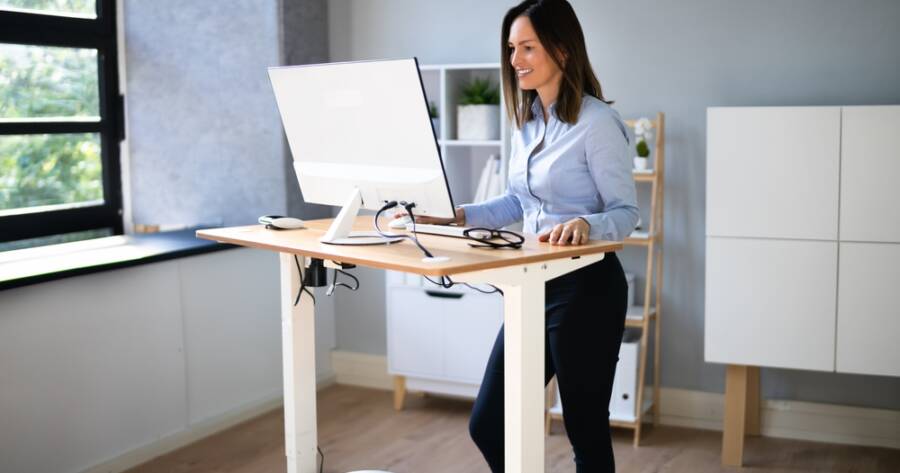In recent years, standing desks have become a popular alternative to traditional sitting desks, with many people believing they improve productivity and health. As more employees and home workers adopt this trend, the question arises: do standing desks really lead to higher productivity? Explore the benefits and challenges of standing desks to determine whether they live up to the hype.
The Rise of Standing Desks
Standing desks have been embraced by workplaces, schools, and home offices as a solution to the growing concerns over sedentary lifestyles. With many workers spending long hours sitting at their desks, there’s an increasing awareness of the potential health risks, including back pain, poor posture, and cardiovascular issues. Standing desks are seen as a way to combat these issues by allowing users to alternate between sitting and standing throughout the day.
The promise of standing desks is simple: by standing more often, you reduce the negative impacts of prolonged sitting while potentially boosting energy levels and productivity. However, the actual impact on productivity is a subject of ongoing debate. To fully understand if standing desks can improve productivity, we need to explore both their benefits and their potential drawbacks.
Health Benefits That May Boost Productivity
Standing desks offer several health benefits that could, in turn, contribute to improved productivity. One of the main benefits is reduced back and neck pain, which is a common issue for those who sit for extended periods. By standing, you engage different muscles and avoid the stiffness that often comes with sitting for long hours. Over time, this can help alleviate discomfort, allowing you to work without frequent breaks for stretching or adjusting your posture.
Moreover, standing desks can improve circulation. Prolonged sitting can slow down blood flow and increase the risk of heart disease. Alternating between sitting and standing can help improve blood circulation, reduce swelling in the legs, and prevent muscle stiffness, all of which may lead to better focus and longer periods of sustained work.
Another health benefit is that standing burns more calories than sitting. While the difference might seem small, over time, this could lead to healthier habits and greater energy levels, which can translate into increased productivity. People with higher energy levels tend to stay focused and work more efficiently.
The Productivity Debate: Does Standing Make a Difference?
While standing desks have clear health benefits, the impact on productivity is not as straightforward. Research shows mixed results when it comes to standing desks and work performance. Some studies indicate that standing desks can improve focus and task performance, while others suggest that standing for long periods may decrease productivity due to discomfort or fatigue.
Standing for extended periods can be tiring, and if not done properly, it can lead to new physical issues, such as foot pain or leg strain. This discomfort might result in workers feeling less productive over time, as they are forced to take more breaks or shift between standing and sitting more frequently. Therefore, the key to improving productivity might not lie in standing all day but in finding the right balance between sitting and standing.
Several experts recommend using standing desks in combination with ergonomic setups, such as adjustable desk height, supportive anti-fatigue mats, and proper footwear. These factors can help make standing more comfortable and sustainable, potentially leading to better productivity over time.
Finding the Right Balance: A Mix of Sitting and Standing
Instead of solely relying on standing desks, many experts recommend a mix of sitting and standing throughout the workday. A hybrid approach, where workers alternate between sitting and standing every 30 to 60 minutes, seems to provide the best results for both health and productivity. This balance allows employees to enjoy the benefits of standing while avoiding the negative effects of staying on their feet for too long.
Using a timer or scheduling specific intervals for standing and sitting can help workers stick to this routine. Some people find that standing for short periods helps them stay focused, while others prefer sitting for tasks that require intense concentration. By listening to their bodies and adjusting their posture accordingly, individuals can tailor their work habits to suit their personal needs.
Standing Desks Can Be Part of a Productive Lifestyle
While standing desks alone may not guarantee improved productivity, they can certainly be a valuable tool when used correctly.
Their health benefits, such as reducing back pain and improving circulation, can create a more comfortable and energized work environment. However, the real key to maximizing productivity lies in the balance between sitting and standing.

